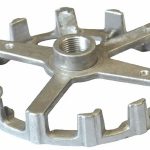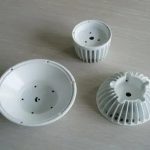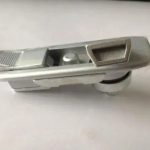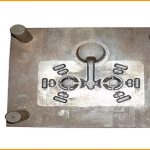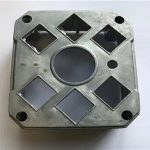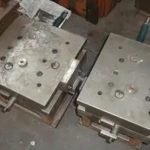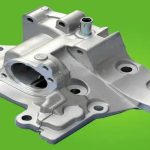All casting factors in the casting process, alloy heating temperature, mold temperature temperature, forming complexity, pouring riser system and gate shape, etc., will affect the forming of aluminum alloy die castings.
Analysis of the causes of pores in aluminum alloy die-casting molding. Firstly, poor refining and degassing. The casting temperature of molten aluminum is generally about 600 degrees. At this temperature, the hydrogen content in the liquid is about 20 times the solid hydrogen content. In the process of condensation in the aluminum industry, a large amount of gas will be generated and needs to be released, so a large number of irregular pores will appear. This is the role of aluminum liquid refining and degassing.
The second possible reason is the pores caused by poor exhaust. For the pores caused by poor exhaust, the exhaust channel of the mold should be improved, and the mold exhaust should be cleaned in time. Residual aluminum skin on the channel can be avoided.
Aluminum alloy die casting molding will also have shrinkage pores. Aluminum alloy shrinks during solidification. The higher the casting temperature, the greater the shrinkage. The pores caused by volume shrinkage exist in the final solidification part of the alloy, which is irregular in shape. Reticulated. Often in the product, it exists at the same time as the pores due to hydrogen evolution during solidification. There are shrinkage pores around the hydrogen evolution pores or entrapment pores, and there are filament or mesh pores that extend to the outside around the bubbles.
The latter is the porosity problem caused by the excessive wall thickness difference of the product. The product shape often has the problem of excessive wall thickness difference. The center of the wall thickness is the place where the molten aluminum finally solidifies, and it is also the most prone to porosity. It must be adequate during the production process Consider the casting temperature and cooling rate of the thick and large parts, similar to this kind of mold design should consider point cooling, increase the amount of cooling.
In order to solve the problems that may occur in the process of aluminum alloy die-casting, it is necessary to use an aluminum alloy die-casting mold temperature controller to control the temperature of the die-casting parts. The aluminum alloy die-casting mold temperature controller can preheat the mold and reduce the mold surface layer and The internal temperature gradient prevents the mold from cracking and failing due to abnormal temperature.
The aluminum alloy die-casting mold temperature machine preheats the mold and maintains the temperature of the mold at the beginning of production and the production gap, reducing the time of hot mold, saving energy consumption, accelerating the progress of production and improving efficiency. During the Cnc Machining and Die Casting process, the mold temperature is kept constant (heating, cooling), so that the size and density of the die-casting parts can be kept stable, and the stability of product quality can be ensured.
Due to the heating and cooling effect of the aluminum alloy die-casting mold temperature controller, it can reduce the amount of release agent used, reduce the chilling of the mold, thereby reducing the generation of thermal stress, delaying the generation of cracks on the mold surface, and extending the service life of the mold. It can reduce the use of cooling water, extend the life of the mold, save the die-casting cycle, have a certain inhibitory effect on product sticking, aluminum sticking and strain, improve the appearance of the product, and reduce the occurrence of defective products.
Please keep the source and address of this article for reprinting:The Elements Of Aluminum Alloy Casting
Reprint Statement: If there are no special instructions, all articles on this site are original. Please indicate the source for reprinting.:Cnc Machine Wiki,Thanks!^^

